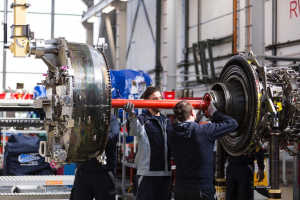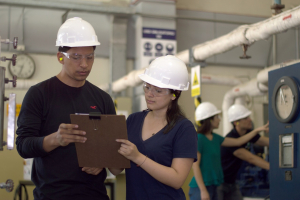Top 10 Incredible Recent Engineering Achievements
Modern engineering wonders are a little more sophisticated and intricate than clocks. Engineers from all around the world have constructed a number of items in ... read more...recent years that were previously regarded as impractical or, at the very least, far in the future.
-
Perhaps one of the most significant engineering projects ever completed is the Large Hadron Collider. The main objective of this 17-mile-long tunnel under the Swiss-French border is to collide various types of particles at extremely high speeds in order to comprehend the true essence of reality.
It was a gigantic project when it first started operating in 2008, both in terms of scale and the range of its objectives. Over 10,000 scientists, engineers, and other professionals from all over the world participated in its planning and construction, which was overseen by CERN, or the European Organization for Nuclear Research.
It is without a doubt the most costly machine ever created, costing over $10 billion, and we can now see that it was well worth the investment. Since its initial operation, the LHC has contributed significantly to theoretical physics, including the well-known discovery of the Higgs boson in 2012.

https://pics.alphacoders.com 
https://news.fnal.gov/ -
The idea of artificial intelligence is not brand-new. The word, which was first used in 1956, has come to be used to describe any kind of device or algorithm that may imitate human intelligence. Simple, marginally intelligent automata like the John Hopkins Beast were used in early trials, but the technology was too limited in terms of processing capacity and other computational factors to have a significant impact.
Today, with the growth of potent graphical processing units (or GPUs), machine learning, and the introduction of "Big Data," Artificial Intelligence is without a doubt one of the most revolutionary advancements of the last few years. One of its numerous applications, neural networks, can think and compute exactly like the human brain, including the capacity to learn from errors.
Numerous industries have been transformed by AI, including marketing, logistics, space exploration, health, and pretty much everything else that involves sorting through a lot of data. Unfortunately, this extends to warfare as forces from around the world create their own AI-based tools to be deployed on future automated battlefields.
https://www.cxoinsightme.com/ 
https://techspective.net/ -
We've all heard about 3D printing, which allows you to essentially create anything you want as long as you have the necessary materials and the design. It is a ground-breaking idea in and of itself, and it has found success in many other applications. One day, it might even make it possible to print biological things, like organs.
In 1754, Jean le Rond d'Alembert published "Dimensions," which was followed by Joseph-Louis Lagrange in the middle of the century, and culminated in Bernhard Riemann's precise formalisation of the theory in 1854. With the help of a step-by-step generalisation of the characteristics of lines, squares, and cubes, Charles Howard Hinton popularised these ideas in an essay titled "What is the Fourth Dimension?" in 1880.
Drawing two regular 3D cubes in 2D space, one containing the other, separated by a "unseen" distance, and then drawing lines between their equal vertices is the simplest way to implement Hinton's method. The above animation illustrates this whenever a smaller inner cube is enclosed by a larger outer cube. In this instance, a single direction in the "unseen" fourth dimension is represented by the eight lines joining the vertices of the two cubes.
That idea is simply expanded upon in 4D, with the exception that the printed objects may now respond in real time to various environmental factors. Many 4D materials, also known as smart materials, have been created in recent years. Examples include self-healing plastics that can eliminate wear and tear and make plastic items infinitely reusable, fabrics that can adjust their molecular structure to changes in the weather, and shoes that can fully repair themselves with an additional gel.

http://www.sciencealert.com/ 
https://www.reddit.com -
Although it is impossible for humans to actually read the thoughts of others, they are capable of inferring their feelings and thoughts through the use of mental models. This is referred to as empathic accuracy, and it entails "reading" signs that are expressed through another person's words, feelings, and body language. Most people can read other people to some extent, however persons with psychotic disorders or autism spectrum disorders may find it difficult to understand other people's emotions or social signs.
Finding electrical and neurological signals in the brain is one thing; reading and capturing what is happening inside our thoughts as we perceive it is quite another. Many of the machines in your neighbourhood hospital could accomplish the first goal. The latter, however, is a barrier that we never believed machines could overcome, since awareness consists of much more than just electrical signals moving through the brain.
It turns out that it's not, after all. We now have computers that can recognize a song playing in your head thanks to artificial intelligence (AI), as they learn the relationships between brain signals and particular musical cues through machine learning. even if less accurately than the tunes, you could try to replicate the picture you're picturing (though still high enough to be creepy).

https://gostica.com/ 
https://mindblowingmagic.com -
A magical garment known as a "invisibility cloak" made the wearer or whatever it covered invisible. Within the wizarding community, invisibility cloaks were incredibly rare and expensive. When people imagine an invisibility cloak, we picture a fictitious substance that could actually make us invisible. (Or, more likely, Harry Potter comes to mind. Naturally.) Many other prototypes have been tried, but almost all of them either rely on shoddy lighting gimmicks or are too large to be of any actual use.
The only substance that even remotely resembles actual invisibility is Quantum Stealth, created by the Canadian company Hyperstealth Biotechnology Corp. In addition, it has a passive, long-lasting effect rather than generating power or creating an optical illusion to make you appear invisible.
The material is clearly intended to successfully bend light around any type of subject, including massive trucks, based on the company's public videos. Though that information is currently secret owing to potential future military applications, we are unsure of how it exactly operates.

https://odditymall.com/ 
https://odditymall.com -
Nanobots, or tiny robots that can do any task, have appeared in a variety of science fiction works. However, until recently, it was virtually hard to create something similar. The earliest models of potential future nanobots are already in existence thanks to recent developments in theoretical sciences and nanotechnology.
Molecular machines and nanomotors have been tried, although most nanomachines are still in the research and development stage. One example is a sensor that can count particular molecules in a chemical sample and has a switch that is around 1.5 nanometers across. The field of nanomedicine may see the first practical uses for nanomachines.
For instance, cancer cells could be recognised and eliminated by biological machines. The detection of harmful substances and the assessment of their quantities in the environment are two more possible applications. A single-molecule vehicle with wheels made of Buckminsterfullerenes (buckyballs) has been demonstrated by Rice University. It is activated by adjusting the temperature of the surrounding area and by positioning the tip of a scanning tunnelling microscope.
These little devices have many applications in medicine, as might be expected. University of California San Diego researchers have created nanobots that have the potential to remove infections and poisons from the bloodstream. Another researcher from the University of New South Wales discovered a way to teach these robots to mend themselves using DNA, obfuscating the distinction between artificially created life and living organs.
https://www.magzter.com/ 
https://fineartamerica.com -
Since more than one-third of the Netherlands already lies below the current sea level, rising sea levels provide a significant problem to the country. A Dutch architectural team has created Schoonschip, a speculative home project in Amsterdam that blends architecture and ecological design to create an altogether new way of life, to counteract its worst consequences.
Located on the Johan van Hasseltkade canal, the entire neighbourhood, which consists of 46 homes, is constructed on floating arks. Although by no means a revolutionary idea, it is an alternative to all of the land-based models we now use because many indigenous groups still rely on floating communities.
However, Schoonschip is more than just a luxurious houseboat. Every component of its design is intended to be recyclable and sustainable, and all decisions are made by the residents. As an illustration, all of the complex's energy is produced using sustainable sources, and it is distributed among the residents via a blockchain.

https://luxurylaunches.com/ 
http://www.businessinsider.com.au -
Pushing the boundaries of not only engineering, but also other academic disciplines can sometimes increase our understanding of the world as a whole. It needn't be, though, since good engineering may equally just be about constructing an extremely tall, attractive building.
The Burj Khalifa, which is 2,717 feet tall, is the highest structure in the world at the moment. It is so tall that it dwarfs the nearest opponent by roughly 500 feet, leaving you to wonder how it is even still standing. The Burj Khalifa was constructed over the course of more than six years by the Chicago company Skidmore, Owings & Merrill. It was initially made accessible to the general public in January 2010. Its Y-shaped base is modelled after the indigenous Hymenocallis flower, but it also functions to withstand strong winds.
There are 163 floors in total, each constructed in a unique design to lessen the impact of the winds as you go higher. The building includes a number of observation decks, including the two-story At The Top on its 124th and 125th floors, as well as upscale restaurants, business centres, and a three-story club. It also has its own homes and shopping areas.
http://suzzstravels.com/ 
https://www.admiddleeast.com -
One of the greatest engineering feats of all time is the development of modern prostheses in and of themselves. Amputees had to make do with crude, uncomfortable prostheses made of leather, wood, and other common materials for the most of our history, or live without them entirely. Only recently have artificial limbs begun to resemble natural limbs in terms of appearance and even sensation. The neuronal connection between a living organ and the brain cannot be replicated by a machine, thus they are still far from being the real thing.
Though they are still in their infancy, mind-controlled prostheses are a new type of prosthetics that may be, well, controlled by the mind. A Swedish research team has created a prototype that integrates with the patient's nerves, muscles, and skeleton to give them significantly greater control over their fingers and wrists than was previously considered possible. In contrast to most prosthetics we currently have, it doesn't require any further care or supervision by a medical practitioner and is currently being used by three Swedish patients.
The technique might be accessible to patients outside of Sweden by the end of this year, according to the researchers. Although it still can't replace a natural limb, it gives us a glimpse of what prostheses may look like in the future.
https://www.hexapolis.com/ 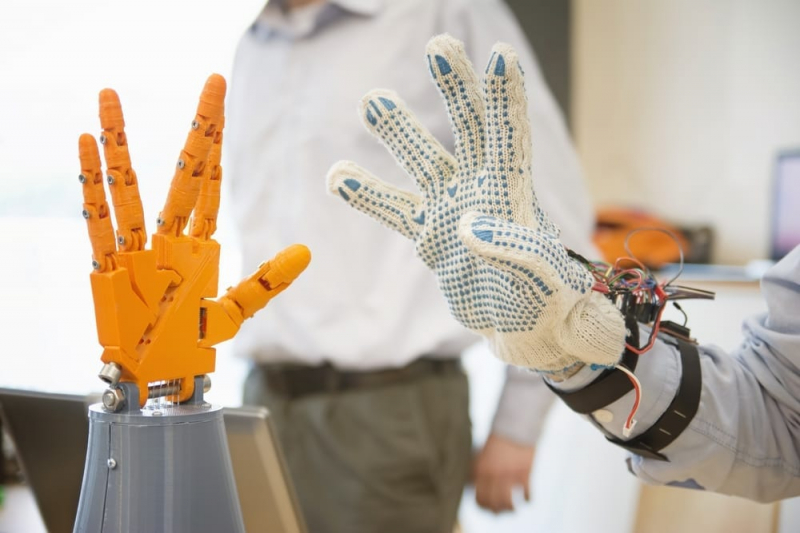
https://www.scommerce.com -
People know relatively little about what is happening with our own Sun, especially on its surface, despite it appearing to be close to Earth. It appears to be cooler than the Sun's atmosphere, or corona, which is where the majority of the Sun's heat actually originates. It makes no sense; it's similar to feeling hotter as you get farther from a fire.
That's only one of the many unknowns about the Sun, and until recently, it was thought impossible and futuristic to reach its corona to collect measurements. On April 28, 2021, NASA's Parker probe broke through that barrier when it made contact with the Sun's atmosphere for the first time. It was Parker's seventh flyby, and it significantly advanced our understanding of how solar winds are produced. It is anticipated that the probe will make another close pass sometime in 2025 while it is still in orbit around the Sun.
https://fineartamerica.com 
https://www.ibtimes.com/




















